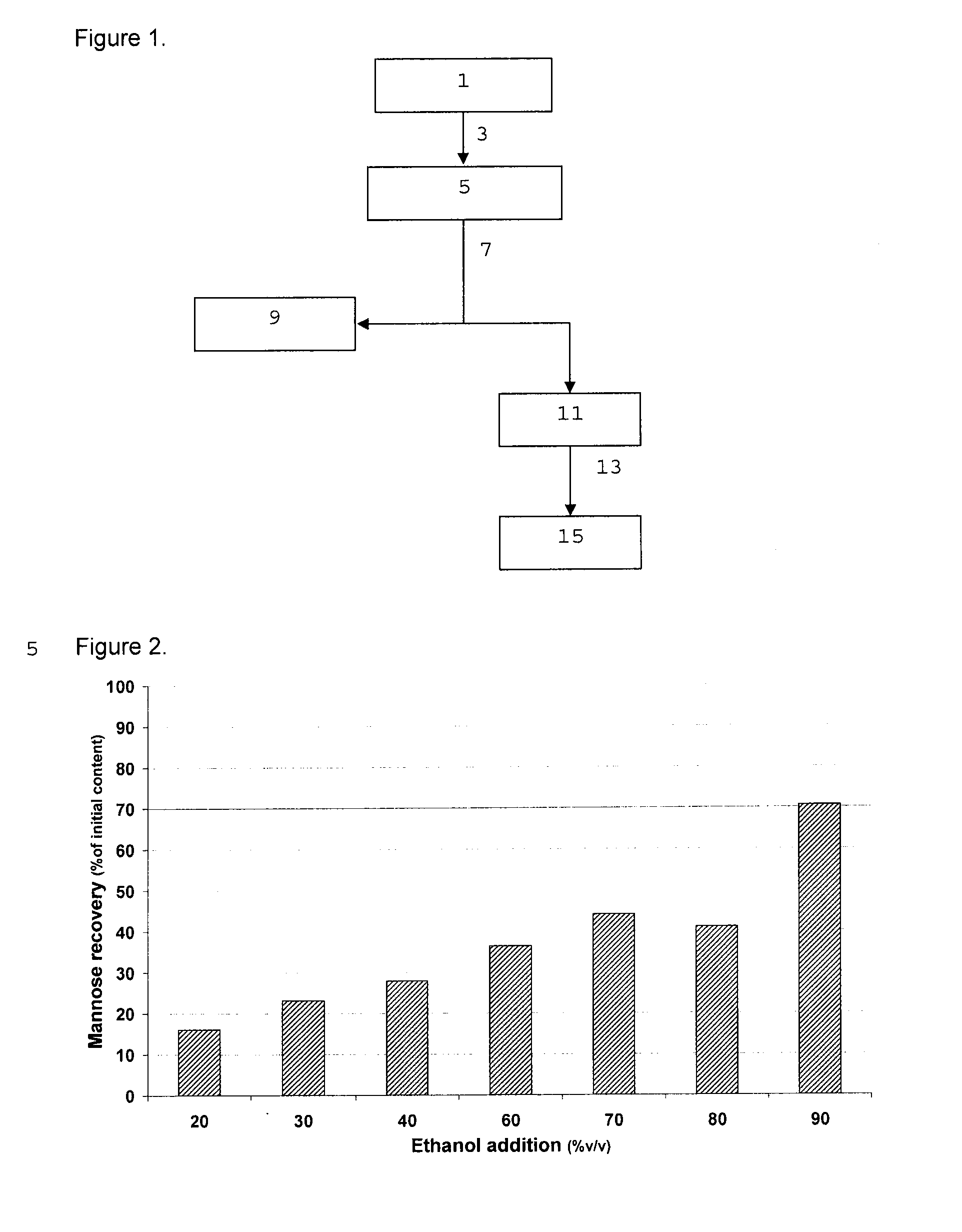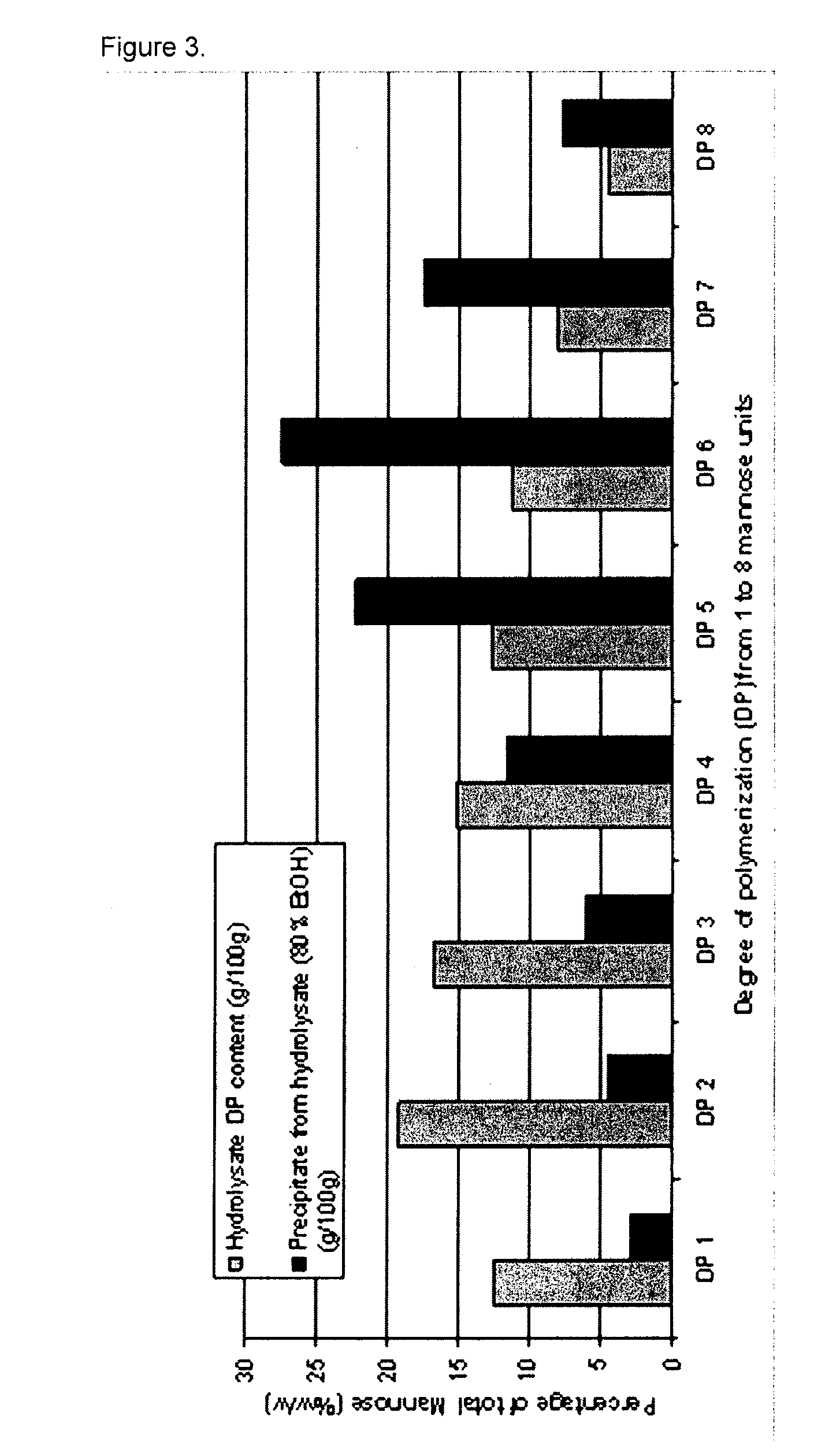Coffee Treatment Method
- Summary
- Abstract
- Description
- Claims
- Application Information
AI Technical Summary
Benefits of technology
Problems solved by technology
Method used
Image
Examples
Embodiment Construction
[0053]An amount of coffee extraction residue material was mixed with water to form a slurry (10% by weight solids) and passed into a plug flow reactor. The slurry was heated to 230° C. for 6 minutes. After this thermal hydrolysis step, the solids were extracted (by centrifuging) from the slurry and discarded to leave a liquid hydrolysate 1 (see the flow chart in FIG. 1).
[0054]The liquid hydrolysate 1 was then mixed in a mixing step 3 with sufficient ethanol (food-grade) to form an 80% v / v ethanolic solution 5. The mixing step 3 was performed on a continuous liquid hydrolysate 1 stream passing from the plug flow reactor.
[0055]The ethanolic solution 5 was allowed to cool to encourage the MOS fraction to precipitate out. After precipitation the suspension was centrifuged in a separation step 7. The separation step 7 produced a supernatant 9 which was discarded and a precipitate 11.
[0056]The precipitate 11 was then re-dissolved in minimal water and freeze-dried in a finishing step 13. T...
PUM
| Property | Measurement | Unit |
|---|---|---|
| Temperature | aaaaa | aaaaa |
| Temperature | aaaaa | aaaaa |
| Pressure | aaaaa | aaaaa |
Abstract
Description
Claims
Application Information
 Login to view more
Login to view more - R&D Engineer
- R&D Manager
- IP Professional
- Industry Leading Data Capabilities
- Powerful AI technology
- Patent DNA Extraction
Browse by: Latest US Patents, China's latest patents, Technical Efficacy Thesaurus, Application Domain, Technology Topic.
© 2024 PatSnap. All rights reserved.Legal|Privacy policy|Modern Slavery Act Transparency Statement|Sitemap


